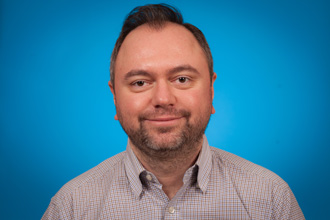Study explores dangerous increase in patients mixing opioids, benzodiazepines or Z-drugs

By Michael Oliveira

Dr. Nicholas Vozoris
A new study by Dr. Nicholas Vozoris, an associate scientist at the Li Ka Shing Knowledge Institute of St. Michael’s Hospital, found a startling 250 per cent increase in Americans taking a dangerous combination of both opioids and benzodiazepines — a group of drugs commonly prescribed for pain, insomnia and anxiety — over a 15-year period.
Even worse, there was an 850 per cent increase in patients taking both benzodiazepines and so-called Z-drugs, which act similarly to benzodiazepines.
The study, published in the journal Sleep, examined how Americans were combining these drugs between 1999 and 2014. Dr. Vozoris said he found the increases very concerning given that these drug-use patterns are associated with increased risks for serious adverse outcomes including breathing problems and death.
We asked Dr. Vozoris about the focus of his study and what he hopes will come next.
Q: Why did you set out to study this topic?
A: As a sleep medicine doctor, I often see people in clinic who are on a worrisome or dangerous combination of sleeping pills or drugs that cause sleepiness as a side-effect, like benzos and narcotics, or benzos and the Z-drugs. I think there’s a lot of confusion out there about Z-drugs, with doctors and members of the public often not realizing that Z-drugs are very similar in action to benzo drugs — sometimes patients get put on both a benzo and a Z-drug and think they’re two very different drugs. I wanted to understand the trends in use of such worrisome drug combinations and which types of individuals were more likely to receive such drug combinations.
Q: What were the key findings from your research?
A: Although narcotic use in the United States has plateaued or decreased a bit in recent years, combined use of narcotics and benzo drugs has progressively increased between 1999 and 2014 by about 250 per cent. Similarly, combined use of benzos and Z-drugs has steadily risen by about 850 per cent. People with mental health issues were one group more likely to get such drug combinations, and morbidly obese individuals were especially likely to get a combination of benzos and Z-drugs.
Q: How do you plan to build on this study?
A: There are a lot of different medications out there to help promote sleep, or that can cause sleepiness as a side-effect beyond benzos, Z-drugs and narcotics. I want to study more about how such medications are being used, by whom and why, and what are the potential breathing complications of using such drugs.
These papers are an example of how St. Michael’s Hospital is making Ontario Healthier, Wealthier, Smarter.
About St. Michael’s Hospital
St. Michael’s Hospital provides compassionate care to all who enter its doors. The hospital also provides outstanding medical education to future health care professionals in more than 29 academic disciplines. Critical care and trauma, heart disease, neurosurgery, diabetes, cancer care, care of the homeless and global health are among the Hospital’s recognized areas of expertise. Through the Keenan Research Centre and the Li Ka Shing International Healthcare Education Centre, which make up the Li Ka Shing Knowledge Institute, research and education at St. Michael’s Hospital are recognized and make an impact around the world. Founded in 1892, the hospital is fully affiliated with the University of Toronto.
About Unity Health Toronto
Unity Health Toronto, comprised of Providence Healthcare, St. Joseph’s Health Centre and St. Michael’s Hospital, works to advance the health of everyone in our urban communities and beyond. Our health network serves patients, residents and clients across the full spectrum of care, spanning primary care, secondary community care, tertiary and quaternary care services to post-acute through rehabilitation, palliative care and long-term care, while investing in world-class research and education. For more information, visit www.unityhealth.to.
